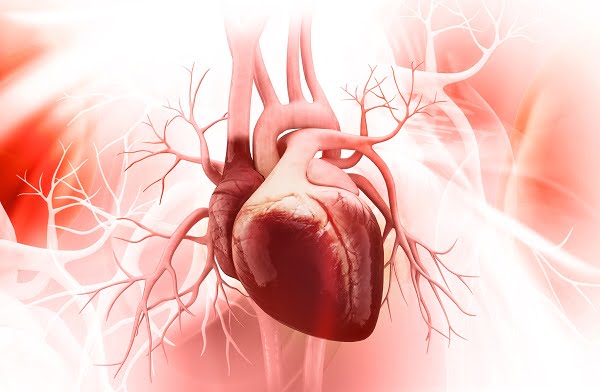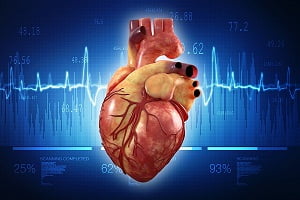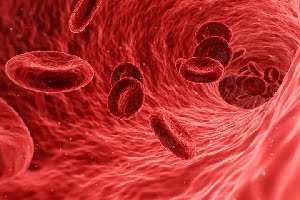Peripheral Arterial Disease: An Overview
- Updated on: Jul 13, 2024
- 6 min Read
- Published on Oct 3, 2019


What is peripheral arterial disease (peripheral vascular disease)?
Peripheral arterial disease or peripheral artery disease (PAD) is also known as peripheral vascular disease (PVD). PAD is a circulatory problem in which the peripheral arteries become narrow and are unable to supply oxygenated blood to the limbs, especially legs.
This condition results in extreme pain and weakening of a particular organ where the blood supply becomes very less.
In severe cases, the peripheral arterial disease may result in heart attack and strokes. PAD is the most common circulatory condition in African-Americans. Men are affected by this condition more than women.
What are the causes of peripheral arterial disease?
Peripheral arterial disease (PAD) occurs when the blood vessels of arms and legs become narrow. The most common cause of this condition is atherosclerosis.
Atherosclerosis occurs when plaque forms on the side walls of the arteries which supply blood to the limbs. This plaque is made up of fat and cholesterol and causes the arteries to become narrow or even block them. Due to the narrowing of arteries, the flow of blood becomes very less in arms and in legs. In severe cases, the blocked blood flow can result in tissue death and may require surgical removal of the foot or leg.
Beside atherosclerosis, other main causes of peripheral artery disease are limb injury, blood vessel inflammation, radiation exposure, etc.
Smoking is also another major risk factor for this condition to happen.
What are the risk factors of peripheral arterial disease?
There are various risk factors associated with peripheral arterial disease. These risk factors increase the chances of having PAD among people. Some common risk factors are as follows:
- Smoking
- Overweight or obesity
- Diabetes
- High blood pressure
- Increasing age, especially after 50 years of age
- High cholesterol
- Family history of PAD or any other heart disease
- Increased level of homocystein (protein in body used for the formation and maintenance of tissues)
- Diseases such as stroke, metabolic syndrome, coronary heart disease, diabetes, etc.
- Physical inactivity
What are the symptoms of peripheral arterial syndrome?
The first symptom of PAD that a person may experience is pain or cramp in his or her leg muscles while walking. The cramps commonly occur in the calf muscle, but it can also occur in the buttock or thigh muscles. It is called intermittant claudication.
In some patients, as the disease progresses, the amount of blood flowing down the leg is reduced and is unable to supply the oxygen and nutrients to the feet. In such cases, the individual experiences pain in his or her legs even when they’re not walking. This pain is called rest pain.
Without proper blood supply in the foot, the skin cannot function properly and thus forms an ulcer. If the symptom of the rest pain becomes worse and formation of ulcers begins, there are very high chances of the leg being amputated or surgically removed.
There are some other symptoms observed in PAD. They are as follows:
- Leg weakness
- Numbness in the leg
- Brittle toenails
- Slow growth of toenails
- The lower leg might feel cold
- Formations of ulcers in feet
- Difficulty in finding a pulse in the foot or leg
- Erectile dysfunction or impotency in men
- Hair loss on feet and legs
- Poor wound healing process
What are the complications of peripheral arterial syndrome?
A person with peripheral arterial disease is at a higher risk of developing various other medical complications such as critical limb ischemia (CLI). It is a severe form of PAD. CLI shows many cases of amputation and mortality. It begins as open sore that does not heal an injury, or an infection in the feet or legs.
What are the diagnostic tests for peripheral arterial syndrome diagnosis?
PAD is diagnosed on the basis of the family history of disease, a physical exam, and test results.
Peripheral arterial syndrome is diagnosed only when the symptoms are reported. It is very important for a person to have a correct diagnosis because such people are also at a higher risk of getting a stroke, coronary heart disease (CHD), transient ischemic attack (mini-stroke), heart attack, etc.
To correctly diagnose the disease, some tests are widely used by the doctors:
Physical exam
During the physical examination of a patient, the doctor may observe some signs and symptoms such as an absent pulse below the narrow artery, whooshing sound or bruits over the arteries which can be heard with the help of a stethoscope, poor wound healing in blood flow restricted area, decreased blood pressure in the affected limb, etc.
Ankle-brachial index (ABI)
ABI is the most common way of diagnosing PAD. In this method, the doctor, with the help of common blood pressure cuff and an ultrasound device, compares the blood pressure of ankle with the arm.
Ultrasound
There is an ultrasound technique such as Doppler ultrasound which allows the doctor to evaluate the flow of blood in the blood vessels and identify the narrowed or blocked arteries.
Angiography
In angiography, a dye is injected into the blood vessels which allows the doctor to properly examine the blood flow through the arteries. The doctor is then able to trace the flow of the dye using imaging techniques such as X-ray imaging, magnetic resonance angiography or MRA, computerized tomography angiography (CTA), etc.
Treadmill Test
A treadmill test is used to observe the severity of symptoms of PAD. In this test, the patient walks on a treadmill to check whether he is facing any problem while normal walking.
Blood test
To diagnose PAD, a blood test is also done to check the level of cholesterol in the body.
Magnetic Resonance Angiogram
In MRA, a combination of magnetic and radio wave energy is used to take pictures of the patient’s blood vessels. This test resembles magnetic resonance imaging or MRI.
An MRA helps in determining the location and severity of a blockage in the blood vessel. If a patient has a pacemaker, stent, man-made joint, surgical clips or other such devices in his or her body, he may not have an MRA.
What are the treatment options for peripheral arterial disease?
Treatment of PAD involves two main aims:
- Managing symptoms such as leg pain, etc so that the patient can continue his or her physical activities.
- Controlling the symptoms of atherosclerosis throughout the patient’s body to lower the risk of stroke and heart attack.
There are various treatment options available for treating this disease. Some of the are as follows:
Regular physical activity
Physical exercise is an effective treatment. The doctor often recommend sessions of supervised exercise training. These sessions includes simple walking regimen, treadmill exercise, and leg exercise, etc which helps in decreasing the symptoms in just 4-8 weeks.
Medications
Use of medicines is a common and the most acceptable method of treating peripheral arterial disease. Various types of medicines used for the treatment are as follows:
Cholesterol-lowering medications
Patients with PAD are prescribed with cholesterol-lowering medicine known as statin which helps in reducing the risk of heart attack
High blood pressure medicines
The doctor may also prescribe some medicines to control the high blood pressure of the patient. The main aim of the therapy is to lower the systolic and diastolic blood pressure if it is too high.
Medication to control blood sugar
If a person has diabetes as well as PAD, his doctor advices him or her to take diabetes medicines in order to control the blood sugar level.
Medications to prevent blood clots
Doctors generally prescribe daily aspirin or another medicine like plavix to reduce blood clot formation and improve the blood flow in the limbs.
Surgery
Bypass Grafting
Bypass grafting is a surgical method which involves attaching a graft above the area of a narrow artery and attaching it to the diseased artery.
A graft is a hollow tube which is used as an alternate passage for the blood to pass through. This method thus improves the supply of blood to the limbs. This treatment is only used for patients who suffer from severe critical limb ischaemia.
Angioplasty and Stent Placement
The doctor may recommend angioplasty to restore the blood flow through a narrowed or blocked artery.
In this procedure, a catheter or a thin tube having a balloon at the tip is inserted into a narrow or blocked artery. The balloon is then inflated that pushes the plaque outward against the wall of the artery. This results in the widening of the artery and helps in restoring the blood flow.
A stent is a small mesh-like tube that is placed in the artery while having an angioplasty to keep the artery open.
Some stents are coated with certain medicines which can help to prevent artery blockages as they dissolve.
Atherectomy
Atherectomy is a surgical procedure in which plaque buildup is removed from an artery. During the process, a thin tube is inserted with a small cutting device into the blocked artery. It is then used to cut off the plaque











